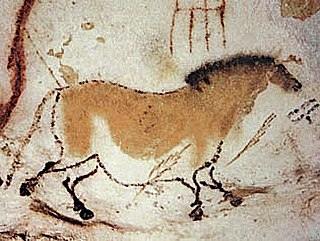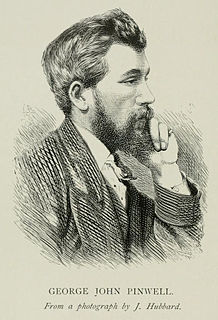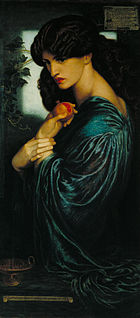
The Pre-Raphaelite Brotherhood was a group of English painters, poets, and art critics, founded in 1848 by William Holman Hunt, John Everett Millais and Dante Gabriel Rossetti. The three founders were joined by William Michael Rossetti, James Collinson, Frederic George Stephens and Thomas Woolner to form the seven-member "brotherhood". Their principles were shared by other artists, including Ford Madox Brown, Arthur Hughes and Marie Spartali Stillman.

Cecil Gordon Lawson was a British landscape painter.

The Royal Birmingham Society of Artists or RBSA is an art society, based in the Jewellery Quarter in Birmingham, England, where it owns and operates an art gallery, the RBSA Gallery, on Brook Street, just off St Paul's Square. It is both a registered charity, and a registered company.
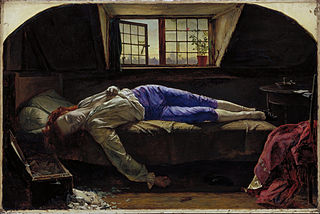
Henry Wallis was a British Pre-Raphaelite painter, writer and collector.
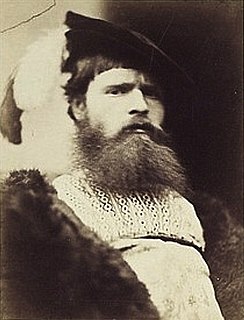
William Frederick Yeames was a British painter best known for his oil-on-canvas problem picture "And When Did You Last See Your Father?", which depicts the son of a Royalist being questioned by Parliamentarians during the English Civil War.
Henry Brittan Willis was an English landscape and animal painter.

Frederick William Pomeroy was a prolific British sculptor of architectural and monumental works. He was one of the so-called New Sculptors identified by Edmund Gosse in 1894 – a group distinguished by a stylistic turn towards naturalism and their work in architectural sculpture.

Robert Walker Macbeth was a Scottish painter, etcher and watercolourist, specialising in pastoral landscape and the rustic genre. His father was the portrait painter Norman Macbeth and his niece Ann Macbeth. His younger brother Henry Macbeth, later Macbeth-Raeburn (1860–1947) was also an artist.

George Heming Mason was an English landscape painter of rural scenes, initially in Italy, then England itself. He was also known as "George Mason" or "George Hemming Mason".

Realism, sometimes called naturalism, in the arts is generally the attempt to represent subject matter truthfully, without artificiality and avoiding artistic conventions, or implausible, exotic, and supernatural elements. Realism has been prevalent in the arts at many periods, and can be in large part a matter of technique and training, and the avoidance of stylization.

Walter William Ouless was a British portrait painter from Jersey. He became an Associate of the Royal Academy (ARA) in 1877 and a full member (RA) in 1881.
Frederick William Elwell was an English painter in oils of portraits, interiors and figurative subjects. He exhibited at the Paris Salon and the Royal Academy, where he became a member in 1938, and painted a portrait of King George V in 1932.

Realism was an artistic movement that began in France in the 1840s, after the 1848 Revolution. Realists rejected Romanticism, which had dominated French literature and art since the late 18th century. Realism revolted against the exotic subject matter and the exaggerated emotionalism and drama of the Romantic movement. Instead, it sought to portray real and typical contemporary people and situations with truth and accuracy, and not avoiding unpleasant or sordid aspects of life. The movement aimed to focus on unidealized subjects and events that were previously rejected in art work. Realist works depicted people of all classes in situations that arise in ordinary life, and often reflected the changes brought by the Industrial and Commercial Revolutions. Realism was primarily concerned with how things appeared to the eye, rather than containing ideal representations of the world. The popularity of such "realistic" works grew with the introduction of photography—a new visual source that created a desire for people to produce representations which look objectively real.

Harry Morley was a British painter, etcher and engraver known for his classical and mythological compositions.
Henry Macbeth-Raeburn was a Scottish painter and printmaker. His father was the portrait painter Norman Macbeth and his niece Ann Macbeth. His elder brother Robert Walker Macbeth (1848–1910) was also an artist.
